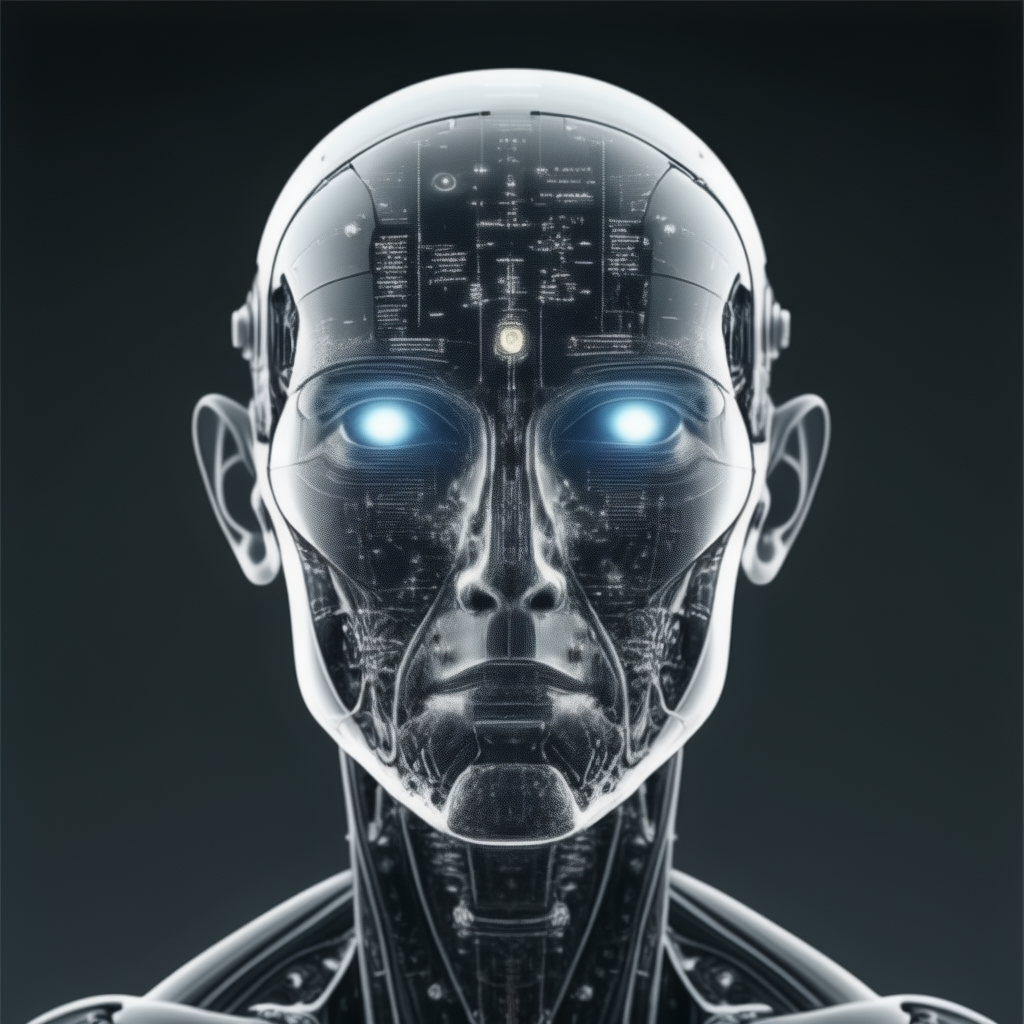Introduction:
The evolution of automobiles epitomizes the marriage of human creativity, engineering excellence, and an unwavering commitment to innovation. This exploration unravels the profound history and scientific foundations that have propelled automobiles from a groundbreaking concept to an indispensable facet of our daily existence.
- The Birth of an Idea:
- Late 19th Century Visionaries: Karl Benz and Henry Ford envisioned a radical shift from horse-drawn carriages to self-propelled vehicles.
- Thought Process: The revolutionary idea sought to redefine transportation, eliminating dependence on traditional horse-drawn modes.
- Genesis of Automotive Science:
- Pioneering Minds: The birth of the automotive industry can be traced back to visionaries like Karl Benz and Henry Ford.
- Combustion Engine Revolution: The development of the internal combustion engine by Nikolaus Otto and others laid the foundation for modern automobiles.
- The Role of Mechanical Engineering:
- Engine Design: Mechanical engineering principles are fundamental in designing efficient and powerful engines.
- Transmission Systems: Mechanical engineers contribute to the development of transmission systems for seamless power delivery.
- Electrification and Electrical Engineering:
- Emergence of Electric Vehicles: Scientific breakthroughs in electrical engineering led to the rise of electric vehicles.
- Battery Technology: Ongoing research in electrical engineering focuses on improving battery technology for enhanced range and efficiency.
- Influence of Electronics:
- Electronic Control Units (ECUs): Electronics play a vital role in ECUs, governing various aspects like engine performance, safety systems, and entertainment.
- Sensor Technologies: Electronic sensors are crucial for monitoring and regulating different vehicle functions.
- Revolution in Materials Science:
- Lightweight Materials: Scientific advancements in materials science introduced lightweight alloys, composites, and polymers to enhance fuel efficiency.
- Durability and Safety: The exploration of materials with high durability contributes to both safety and longevity.
- Automotive Aerodynamics Engineering:
- Streamlining for Efficiency: Engineers focus on shaping vehicles to minimize air resistance, optimizing aerodynamics for fuel efficiency.
- Wind Tunnel Testing Advancements: The use of wind tunnels in engineering allows precise testing and refinement of vehicle designs.
- Safety Engineering and Crash Tests:
- Biomechanical Studies: Safety engineers leverage biomechanics to understand the impact of collisions on occupants.
- Crash Test Innovations: Advanced crash test simulations help engineers design vehicles that prioritize occupant safety.
- Computer-Aided Design (CAD):
- Virtual Prototyping: CAD systems enable engineers to create virtual prototypes, streamlining the design process.
- Iterative Design: Continuous refinement using CAD allows engineers to optimize vehicle designs before physical prototyping.
- Manufacturing Processes and Robotics:
- Automated Assembly Lines: Manufacturing engineers implement robotics for precision and efficiency in assembling vehicles.
- Quality Control: Scientific approaches to quality control ensure vehicles meet safety and performance standards.
- Human Factors Engineering:
- User-Centric Design: Human factors engineers contribute to creating ergonomic and user-friendly vehicle interiors.
- Driver-Assist Technologies: Understanding human behavior helps design intuitive driver-assist systems for enhanced safety.
- Infotainment Systems and Software Engineering:
- User Interface Design: Software engineers collaborate for intuitive infotainment interfaces.
- Connectivity Solutions: Innovations in software engineering enable seamless connectivity for in-car entertainment and communication.
- Integration of IoT and Connectivity:
- Vehicular Networks: Engineers integrate IoT to establish communication between vehicles and smart infrastructure.
- Real-Time Data Exchange: Connectivity solutions facilitate real-time data exchange for improved navigation and safety.
- Emergence of Autonomous Vehicles:
- Sensor Fusion Technologies: Autonomous vehicles rely on sensor fusion technologies for comprehensive environmental perception.
- Machine Learning in Autonomy: The integration of machine learning algorithms allows vehicles to learn and adapt to diverse driving scenarios.
- Environmental Engineering and Sustainability:
- Emission Reduction Strategies: Environmental engineers contribute to developing technologies that reduce vehicular emissions.
- End-of-Life Vehicle Recycling: Sustainability efforts include research on recycling and eco-friendly disposal of end-of-life vehicles.
- Global Standardization and Regulations:
- Safety Standards: Engineers work to comply with global safety standards, ensuring vehicles meet regulatory requirements.
- Emission Norms: Adherence to emission norms is a critical aspect, driving continuous improvements in vehicle technologies.
- Consumer Feedback and Iterative Design:
- Market Research: Engineers analyze consumer feedback to refine and enhance future vehicle models.
- Iterative Improvements: Continuous iterations based on consumer preferences contribute to the evolution of automotive design.
- Collaboration with Research Institutions:
- Industry-Academia Partnerships: Collaborations with universities and research institutions foster innovation and bring cutting-edge research to the automotive industry.
- Research and Development Funding: Investment in R&D ensures ongoing scientific exploration and technological advancements.
- Adoption of Quantum Computing:
- Simulation and Optimization: Quantum computing is explored for simulating complex scenarios and optimizing vehicle designs.
- Advanced Analytics: Harnessing quantum computing’s computational power allows for in-depth analysis of vehicle performance.
- Innovations in Battery Technologies:
- Solid-State Batteries: Engineers focus on developing solid-state batteries for electric vehicles, aiming for higher energy density and safety.
- Fast Charging Solutions: Research addresses challenges in fast-charging technologies to make electric vehicles more practical.
- Neural Network Applications in Autonomous Driving:
- Deep Learning: Neural networks are employed in autonomous driving for processing vast amounts of data from sensors.
- Real-Time Decision-Making: The application of neural networks contributes to real-time decision-making in complex driving scenarios.
- This detailed exploration from the conceptualization of automobiles to their commercialization underscores the interdisciplinary nature of automotive engineering. The integration of various scientific and engineering disciplines has propelled the automotive industry forward, shaping the present and paving the way for the future of transportation.
- Scientific Principles Driving Motion:
- Newtonian Physics: The foundation of motion principles played a pivotal role in the development of early engines.
- Combustion Engine: A milestone invention, harnessing controlled explosions to propel vehicles, marked a transformative era in transportation.
- Breakthroughs in Engine Technology:
- Internal Combustion Engine: Nikolaus Otto’s four-stroke engine laid the groundwork for the automotive industry.
- Continuous Advancements: Innovations in fuel injection, turbocharging, and electronic control systems continually elevated engine efficiency.
- From Horsepower to Horsepower:
- Measurement Metric: Early automobiles were quantified in “horsepower,” symbolizing their capacity to replace traditional equine power.
- Advancements: Scientific strides in engine efficiency translated into the creation of swifter and more potent vehicles.
- The Role of Materials Science:
- Material Innovations: Lightweight alloys and advanced composites emerged, profoundly influencing vehicle design and fuel efficiency.
- Technological Impact: Scientific breakthroughs in materials science contributed to the development of more sustainable and performance-oriented automobiles.
- Evolution of Safety Standards:
- Biomechanics Research: Scientific exploration into biomechanics and crash dynamics shaped the implementation of pivotal safety features.
- Safety Features: Airbags, seatbelts, and crumple zones became integral, enhancing occupant protection through scientific advancements.
- Transition to Technology:
- Integration of Computers: The infusion of computers and sensors ushered in a technological renaissance in automobiles.
- Artificial Intelligence: Scientific strides in artificial intelligence empowered the realization of autonomous vehicles, revolutionizing transportation paradigms.
- Electric Revolution:
- Scientific Understanding: The ascendancy of electric propulsion was underpinned by a deepened comprehension of electric vehicle technology.
- Battery Breakthroughs: Continuous scientific research led to breakthroughs in battery technology, rendering electric vehicles a sustainable and viable alternative.
- Connected Vehicles and the Internet of Things (IoT):
- IoT Integration: The amalgamation of vehicles with the Internet of Things enabled seamless communication with infrastructure for heightened safety and efficiency.
- Technological Symbiosis: Scientific advancements in IoT integration marked a paradigm shift in how vehicles interact with their surroundings.
- Environmental Considerations:
- Eco-Friendly Alternatives: Scientific research is dedicated to fostering environmentally conscious alternatives, such as hydrogen-powered vehicles and sustainable fuel sources.
- Sustainability Focus: Ongoing scientific endeavors target minimizing the ecological footprint of automobiles, aligning with global sustainability goals.
- Biometric Vehicle Access:
- With advancements in biometric technology, vehicles are now incorporating features like fingerprint recognition and facial scanning for secure access.
- Scientific research in biometrics ensures reliable and efficient identification methods, enhancing vehicle security and user experience.
This point delves into the integration of biometric technology in automobiles, highlighting the scientific research behind secure and personalized access systems for vehicles.
73.Smart Infrastructure Integration:
- As cities evolve, the integration of smart infrastructure becomes a key aspect of the automotive landscape.
- Scientific research in urban planning and connectivity allows for the development of intelligent traffic management systems and vehicle-to-infrastructure communication.
74.Advanced Driver Assistance Systems (ADAS):
- Technological Integration: ADAS encompasses features like adaptive cruise control, lane-keeping assistance, and automated parking.
- Sensor Technologies: The scientific research behind sensor technologies, including radar, lidar, and cameras, enables the development of advanced safety and driver-assist functionalities.
75. Vehicle-to-Everything (V2X) Communication:
- Connectivity Evolution: V2X communication enables vehicles to communicate with each other and their surroundings.
- Scientific Implications: Research focuses on the reliability and security of V2X systems, exploring the potential for enhanced traffic management and safety.
76.Automotive Aerodynamics:
- Streamlining Design: The study of aerodynamics influences vehicle design to minimize drag and enhance fuel efficiency.
- Wind Tunnel Testing: Scientific methodologies like wind tunnel testing contribute to optimizing vehicle shapes for improved aerodynamic performance.
77.Regenerative Braking Systems:
- Energy Recovery: Scientific advancements in regenerative braking systems capture and store kinetic energy during braking.
- Efficiency Improvement: Research aims to enhance the efficiency of regenerative braking, contributing to overall energy conservation in electric and hybrid vehicles.
78.Autonomous Vehicle Ethics and Decision-Making:
- Ethical Considerations: Scientific research delves into the ethical implications of decisions made by autonomous vehicles in complex scenarios.
- Machine Learning Algorithms: Understanding how machine learning algorithms process ethical choices is a critical aspect of ensuring responsible autonomous vehicle deployment.
79.Human-Machine Interface (HMI):
- User Experience Research: Scientific insights into human cognition and behavior inform the design of intuitive and safe interfaces.
- Cognitive Ergonomics: The study of cognitive ergonomics contributes to creating interfaces that minimize distraction and enhance driver focus.
80. Automotive Cybersecurity:
- Threat Analysis: Scientific research in cybersecurity assesses potential threats to in-vehicle networks and connected systems.
- Encryption Techniques: Advancements in encryption methods form a crucial part of securing vehicle communication systems from cyber threats.
81. Dynamic Charging for Electric Vehicles:
- Continuous Power Supply: Scientific innovations explore dynamic charging systems that provide continuous power to electric vehicles while in motion.
- Wireless Charging Technologies: Research in wireless charging contributes to the development of convenient and efficient charging solutions for electric vehicles.
82. Sustainable Manufacturing Processes:
- Eco-Friendly Materials: Scientific research focuses on identifying sustainable materials for vehicle manufacturing, reducing the environmental impact of production.
- Waste Reduction: Innovative processes aim to minimize waste and energy consumption in the manufacturing lifecycle of automobiles.
83. Biodegradable and Recyclable Components:
- Material Science Applications: Research explores the use of biodegradable and recyclable materials in various automotive components.
- Circular Economy: Scientific endeavors aim to create a circular economy in the automotive industry, where components are designed for recyclability and reuse.
84. Neuromorphic Engineering in Vehicle Control Systems:
- Brain-Inspired Systems: Scientific exploration of neuromorphic engineering involves creating vehicle control systems inspired by the human brain.
- Sensorimotor Integration: Mimicking the brain’s sensorimotor integration contributes to more adaptive and responsive vehicle control mechanisms.
85. Psychological Impact of Vehicle Colors:
- Color Psychology: Scientific research examines how vehicle colors impact driver and passenger emotions and behavior.
- Safety Considerations: Understanding the psychological aspects of color choice contributes to creating safer and more comfortable driving experiences.
86. 3D Printing in Automotive Manufacturing:
- Additive Manufacturing: Scientific advancements in 3D printing revolutionize prototyping and the production of intricate automotive components.
- Material Science Innovations: Research in materials compatible with 3D printing contributes to expanding the applications of this manufacturing method.
87. Automotive Acoustics and Sound Engineering:
- Noise Reduction Techniques: Scientific studies in acoustics focus on minimizing unwanted noise within vehicles.
- Enhancing Audio Experiences: Research explores ways to optimize in-car audio systems, taking into account vehicle interiors and acoustic principles.
88. Quantum Computing Applications in Automotive Simulation:
- Computational Power: Quantum computing research explores the potential for highly efficient simulations in automotive design and testing.
- Simulation Accuracy: Leveraging quantum computing in simulations enhances accuracy and speed in evaluating vehicle performance and safety.
89. Synthetic Fuels and Carbon-Neutral Mobility:
- Fuel Innovation: Scientific endeavors focus on developing synthetic fuels with reduced carbon footprints for internal combustion engines.
- Holistic Sustainability: Research explores the broader concept of carbon-neutral mobility, considering the entire lifecycle impact of vehicles.
90. Human-Centric Vehicle Design:
- Anthropomorphic Studies: Scientific insights from anthropomorphic studies contribute to designing vehicles that prioritize user comfort and ergonomics.
- Inclusive Design: Research aims to create vehicles that cater to diverse user needs and physical abilities.
91. Biomechanics of Autonomous Vehicle Interiors:
- Ergonomic Considerations: Scientific research in biomechanics informs the design of interiors to accommodate the well-being of passengers in autonomous vehicles.
- Human Factors: Understanding human biomechanics contributes to creating safe and comfortable interior spaces for occupants.
92.Automotive Weather Forecasting Systems:
- Localized Predictions: Scientific advancements in weather forecasting for specific driving routes enhance safety and efficiency.
- Vehicle-Integrated Systems: Research explores integrating real-time weather data into vehicle systems to optimize driving conditions.
93. Cognitive Computing for Predictive Maintenance:
- Machine Learning Algorithms: Scientific research in cognitive computing utilizes machine learning for predictive maintenance in vehicles.
- Component Longevity: Predicting and addressing potential issues before they occur contributes to extending the lifespan of automotive components.
Each of these points delves into a specific aspect of the intricate scientific landscape that shapes the automotive industry. From cutting-edge technologies to sustainable practices, these advancements collectively contribute to the evolution and innovation within the realm of automobiles.
Conclusion:
The journey from the conceptualization of automobiles to the technologically advanced vehicles of today is a remarkable tale of scientific curiosity, engineering brilliance, and a commitment to pushing the boundaries of what is possible. As we drive into the future, the scientific saga behind automobiles continues to unfold, promising innovations that will shape the landscape of transportation for generations to come.







